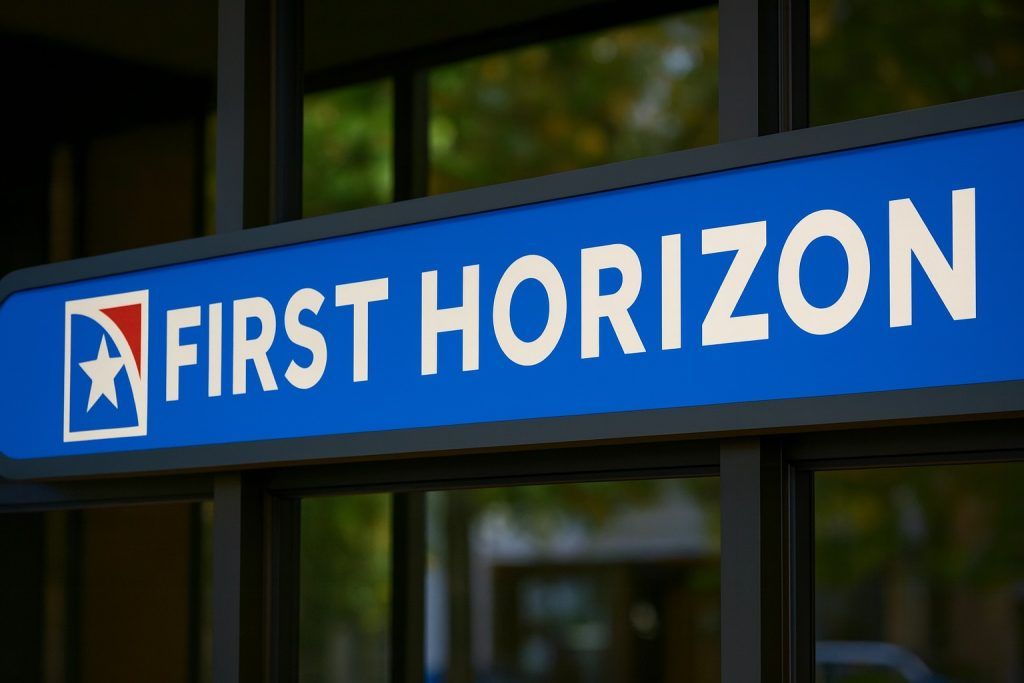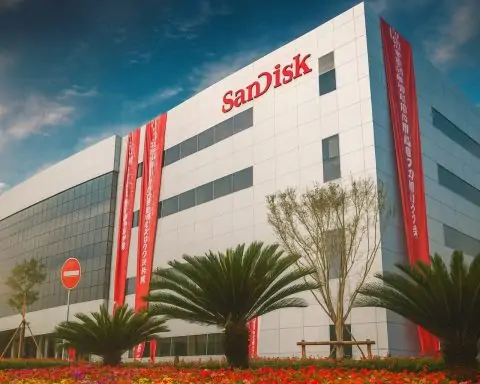Key Facts: As of Oct. 15, 2025, Mawson Infrastructure (NASDAQ: MIGI) shares are trading around $1.00–1.30, roughly double where they stood a week earlier [1] [2]. The stock jumped +13.36% on Oct. 14 (from $0.88 to $1.00) [3], and has surged nearly 140% over the past two weeks [4]. Drivers include a volatile crypto market and mixed company news. In recent months Mawson signed a 64 MW colocation deal with ASIC maker Canaan Inc. to host 17,453 mining rigs [5], but also grappled with management turmoil. CEO Rahul Mewawalla was abruptly fired “for cause” amid a fraud lawsuit in July [6], raising governance concerns. Nasdaq granted Mawson extra time to meet listing requirements [7]. Analysts remain cautious: H.C. Wainwright maintains a Neutral rating while the stock recovers [8].
Wednesday’s Stock Surge and News
On Oct. 15 MIGI continued its recent rebound, trading around $1.28 by mid‐morning (up roughly 28% year-to-date) [9]. Yesterday (Oct. 14) the stock closed at $1.00, a 13.36% one-day gain [10]. This follows a volatile week: MIGI first doubled in price in early October (reaching ~$1.12 on Oct. 7) amid a crypto market rally, then slid back after Friday’s crypto sell-off and company news, before rebounding Monday and Tuesday. Traders cited two big influences. First, Bitcoin and crypto markets: Bitcoin hit new all-time highs above $126,000 on Oct. 6 but plunged ~15% after a spike in U.S.–China trade tensions [11]. That historic swing has rippled through mining stocks. Mawson’s recent recovery tracks Bitcoin’s bounce back toward ~$116K (as of Oct.14) [12]. Second, company developments: Investors were rattled by news that CEO Rahul Mewawalla was placed on leave (June) and later fired “for cause” in July, amid a fraud lawsuit – a sign of severe internal issues [13]. However, Mawson’s board has since been stabilized under interim CEO Kaliste Saloom [14] [15], and the company won a Nasdaq compliance extension to buy time on its $1 minimum bid price [16]. In short, MIGI’s recent bounce reflects relief over a balanced recovery plan plus the broader crypto rebound, offsetting earlier panic.
Volatility of Recent Sessions
Mawson’s stock has swung wildly. After languishing around ~$0.40 in late September, MIGI jumped +24% on Oct. 1 and +61% on Oct. 2 as crypto interest surged [17]. By Oct. 7 it peaked near $1.12. But the Oct. 10 sell-off (10% drop) coincided with the CEO news and crypto plunge [18]. Since then the stock has clawed back: up +10% on Oct. 13 and +13% on Oct. 14 [19]. Technical analysts note the recent trend is sharply up: MIGI is trading above its 200-day average [20] and remains in a rapid short-term rally. However, volumes and price swings suggest high risk: the stock is very volatile, and HC Wainwright notes its beta is nearly 4× that of the market [21]. In short, short-term traders see profit-taking pressure, but the stock’s two-week gains indicate strong momentum as of today.
Company News & Expert Commentary
Mawson’s management turmoil is at the center of investor focus. In late May the company put founder-CEO Rahul Mewawalla on notice, and on June 2 placed him on leave, elevating longtime GC Kaliste Saloom as interim CEO [22]. On July 8 Mewawalla was formally terminated “for cause” under his employment agreement [23]. He forfeited millions of unvested stock grants, and the board pushed him off the board. Mawson issued few public details, but analysts at AInvest noted that this “abrupt termination” amid a fraud lawsuit “signaled severe governance risks” [24]. HC Wainwright concurred that the legal fallout has been a major overhang: its recent report says Wainwright will stay on the sidelines “until positive milestones in legal settlements clear the existing overhangs” [25].
Despite this turmoil, Mawson has continued to expand its data-center business. In March 2025 Mawson signed a three-year colocation agreement to host about 17,453 next-gen ASIC miners (≈5.5 EH/s total) for Canaan Inc. [26] [27]. CEO Mewawalla touted that deal as a win: “We recently announced that we grew our digital colocation business revenue 136% year-on-year. We are now pleased to sign and welcome Canaan as our newest enterprise-grade customer,” he said at the time [28]. The new contract brings ~64 MW of capacity to Mawson’s Pennsylvania facilities (with room to expand). It was meant to be a growth engine – Wainwright notes Mawson’s “near-term recovery strategy centers on executing its 64MW, three-year colocation agreement with Canaan” [29]. Wainwright’s analysts add that Mawson’s flagship 120 MW Midland, PA, site is roughly 70% utilized even after this deal [30]. In other words, if Mawson can fill that capacity, revenues could climb substantially.
Mawson has also addressed legacy issues: its Sept. 17 press release said it has presented a plan to Nasdaq and received an extension to meet listing standards [31]. The company refreshed its investor presentation (Sept. 2025) and filed a new $S$-3 shelf registration for future funding [32]. Earlier, Mawson has been selling off underutilized assets (e.g. its GA mining facility) to focus on Pennsylvania and new projects. Recently the board filled its CFO post (William Regan) and added execs from AWS/Apple to bolster its data-center team, signaling a pivot toward AI/HPC. “We drove significant growth as our digital colocation business grew 136% YOY,” Mewawalla said in January 2025, describing a strategy to expand AI and high-performance computing services [33]. That growth story underpins why some investors remain upbeat, even as analysts await legal clarity.
Crypto, Energy and Sector Trends
Mawson’s fortunes move with the broader crypto and data-center sectors. Bitcoin’s extreme volatility has dominated the headlines. According to Reuters, Bitcoin hit ~$126,000 on Oct. 6 but then crashed to ~$105,000 by Oct. 11 – a 15% plunge triggered partly by a U.S.–China tariff spike [34]. Crypto researcher Nic Puckrin (The Coin Bureau) noted that the crash “cleaned out excessive leverage,” but also warned Bitcoin still faces “another uphill battle” to sustain new highs [35]. For MIGI, which mines Bitcoin and hosts miners, this means erratic revenue: higher prices boost margins, while price drops can force cost cuts or retrenchment.
Energy costs and regulations also affect crypto miners like Mawson. An analysis by AInvest shows U.S. miners now produce 37.8% of global Bitcoin hashrate (up from near zero a few years ago) thanks to cheap renewables and stable policy [36]. However, tariffs on Chinese ASICs and rising power costs have pushed the miner breakeven to ~$87,000 per BTC [37]. Mawson’s emphasis on carbon-free energy (even nuclear) is a plus in this environment. Meanwhile, U.S. regulatory clarity has improved: under SEC Chair Paul Atkins, rules have become more crypto-friendly (for example, clarifying that proof-of-work mining isn’t a securities offering). This helps publicly traded miners. Institutional interest is growing too: one report notes 70% of institutional Bitcoin inflows now come via ETFs/ETPs, underscoring how crypto is maturing into a more “digital gold” asset [38]. In sum, Mawson benefits from secular trends (a crypto bull run and AI/data-center demand) but must navigate regulatory and cost pressures in the mining industry.
Analysts’ Outlook and Future Prospects
Wall Street remains cautious on MIGI. After the second-quarter earnings (Q2 2025), HC Wainwright kept a Neutral rating [39]. Its analysts highlighted Mawson’s weakness in co-location revenue (down after a large customer withdrew miners) but noted energy and self-mining gains [40]. The firm sees the Canaan deal and Midland utilization as key. In practice, most sell-side experts are waiting for positive catalysts – notably legal resolutions, consistent earnings, and sustained crypto prices – before upgrading. The consensus price targets (if any exist) are widely divergent and outdated; some models still show targets in the hundreds of dollars (pre-split), reflecting optimism about global potential, but realistic near-term targets are much lower.
Among crypto and infrastructure strategists, opinions vary. Mawson’s strong near-term catalysts include growing colocation capacity (AI/HPC leases) and a possible crypto upswing after the current volatility. However, the company’s tiny market cap (just ~$20–30M) and history of dilution mean any forecast is speculative. As one mining analyst put it, “Mawson’s stock remains a high-risk, high-reward proposition”: if the crypto market rallies and Mawson executes its expansion deals, the stock could see large gains; but until its governance and balance sheet issues are settled, analysts urge caution [41] [42].
What investors should watch: In the short term, market attention will focus on Bitcoin’s price action and any news on Mawson’s legal cases. A sustained crypto rally could lift MIGI, while a fresh downturn might trigger further dips. Mawson’s next big test will be actually deploying the Canaan miners and filling its remaining capacity – success there would drive revenue growth. Analysts will also be eyeing any SEC filings (e.g. earnings report due mid-November) for signs of stabilizing cash flow. “For now,” says one commentator, “Mawson’s share price reflects a bet on the crypto cycle and the new management’s turnaround plan. That could work out – but it’s far from a sure thing [43] [44].”
Sources: Mawson’s own press releases and investor updates [45] [46]; financial data from Nasdaq/Yahoo historical tables [47] [48]; coverage by Investing.com and MarketScreener [49] [50]; AInvest analysis [51]; Reuters crypto market reports [52] [53]; sector research by AInvest [54] [55].
References
1. markets.financialcontent.com, 2. www.marketscreener.com, 3. markets.financialcontent.com, 4. stockinvest.us, 5. www.mawsoninc.com, 6. www.ainvest.com, 7. www.mawsoninc.com, 8. www.investing.com, 9. www.marketscreener.com, 10. markets.financialcontent.com, 11. www.reuters.com, 12. www.reuters.com, 13. www.ainvest.com, 14. www.marketscreener.com, 15. www.investing.com, 16. www.mawsoninc.com, 17. stockinvest.us, 18. www.ainvest.com, 19. markets.financialcontent.com, 20. www.ainvest.com, 21. www.investing.com, 22. www.marketscreener.com, 23. www.ainvest.com, 24. www.ainvest.com, 25. www.investing.com, 26. www.mawsoninc.com, 27. www.mawsoninc.com, 28. www.mawsoninc.com, 29. www.investing.com, 30. www.investing.com, 31. www.mawsoninc.com, 32. www.mawsoninc.com, 33. www.datacenterdynamics.com, 34. www.reuters.com, 35. www.reuters.com, 36. www.ainvest.com, 37. www.ainvest.com, 38. www.ainvest.com, 39. www.investing.com, 40. www.investing.com, 41. www.ainvest.com, 42. www.investing.com, 43. www.ainvest.com, 44. www.reuters.com, 45. www.mawsoninc.com, 46. www.mawsoninc.com, 47. markets.financialcontent.com, 48. stockinvest.us, 49. www.investing.com, 50. www.marketscreener.com, 51. www.ainvest.com, 52. www.reuters.com, 53. www.reuters.com, 54. www.ainvest.com, 55. www.ainvest.com










